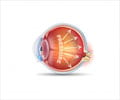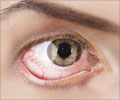Discover the significance of detecting glaucoma early on. Learn about ocular pressure tests, treatment options, and why regular eye exams are vital.
- Glaucoma affects millions of Americans and is a leading cause of blindness
- Regular eye exams and ocular pressure tests are crucial for early detection
- Treatment options include eyedrops, oral drugs, laser therapy, and surgical interventions
Importance of Early Detection of Glaucoma
According to the Centers for Disease Control and Prevention, around 3 million Americans suffer from glaucoma. The illness is the world's second-largest cause of blindness. Half of patients with the most prevalent kind, open-angle glaucoma, are unaware of their condition (1✔ ✔Trusted SourceAt a glance: Glaucoma
Go to source). The small tubes that naturally drain away eye fluid get clogged in open-angle glaucoma.
"The exact cause or mechanism of open-angle glaucoma is unknown at this time. We can manage the eye pressure, but do not have a cure for the disease," O'Rourke said in a center news release. However, treatment can control glaucoma.
Both heredity and age might play a role in the illness. O'Rourke suggests that adults over the age of 50 get tested for glaucoma at least once a year, even if they have perfect eyesight. Anyone who has a family member with glaucoma should get tested sooner.
Some people report pain, blurry vision, and light sensitivity, but many people have no symptoms at the start of the condition. Rather, individuals have irreversible slow progressive peripheral vision loss. Without treatment, patients with this illness will eventually lose their vision. However, glaucoma is treatable, particularly in the early stages.
Diagnosing Glaucoma: Ocular Pressure Tests and Treatment Options
Doctors use ocular pressure tests to diagnose glaucoma. Normal pressure ranges from 10 to 21 millimeters of mercury (mm Hg). Any value more than 21 indicates the need for additional testing. A puff test is a popular procedure in which a machine blows a puff of air into a patient's eye.O'Rourke stated that she often employs a Goldmann applanation tonometer. An eye drop numbs the eye before the gadget softly taps or rests on the front surface of the eye to obtain a better reading.
Oral drugs can also reduce eye pressure, and laser therapy can improve fluid outflow through the eye's drainage system. Medication will almost always be required to maintain the pressure.
Reference:
- At a glance: Glaucoma - (https://www.nei.nih.gov/learn-about-eye-health/eye-conditions-and-diseases/glaucoma)














